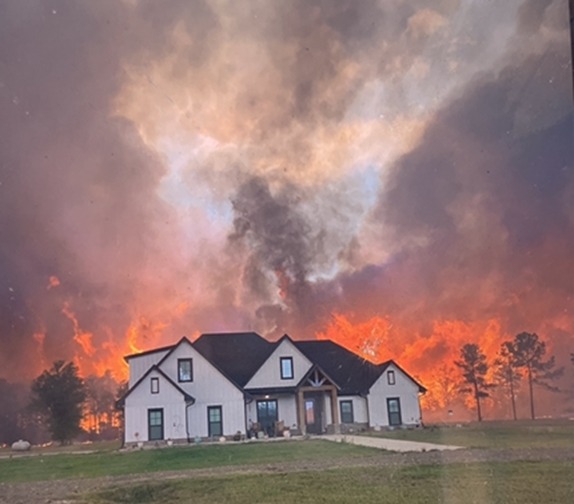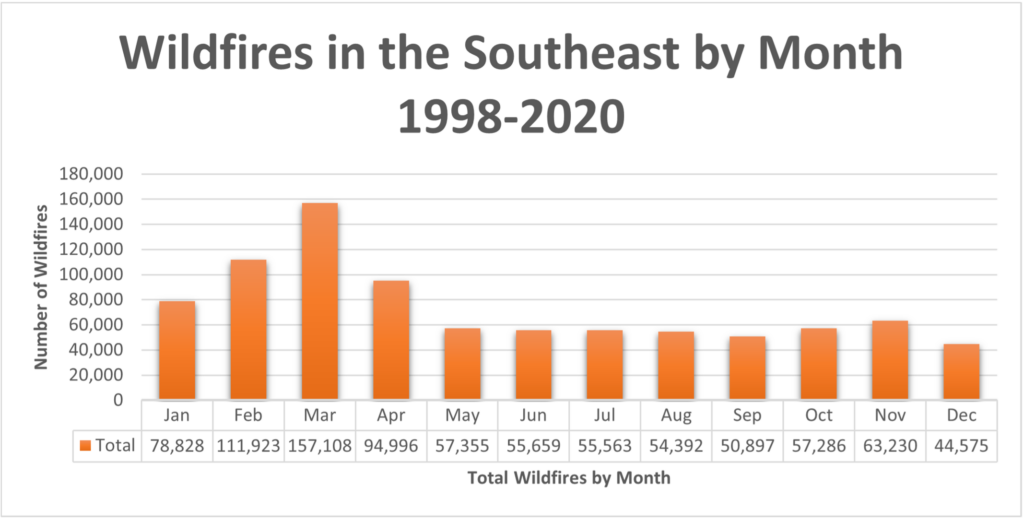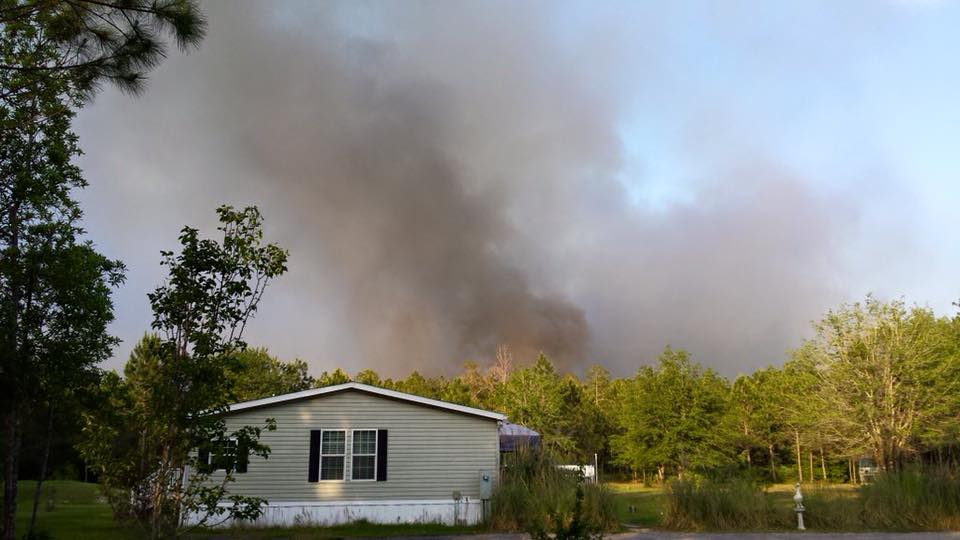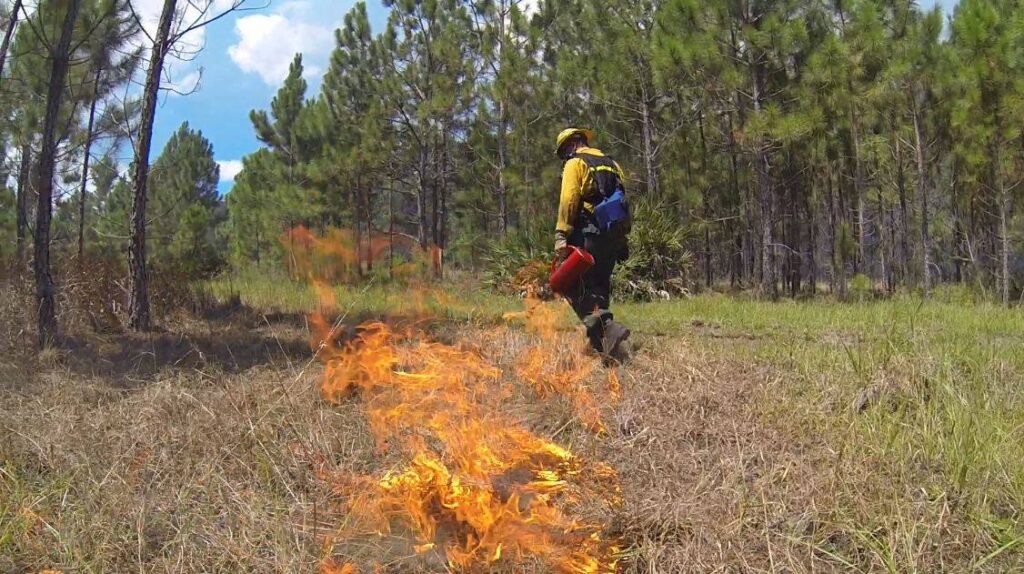Updates & Blog
Why Wildfires Aren’t Just a Western Problem: The Truth About Year-Round Wildfire Risks in the South

When most people think of wildfires, images of roaring infernos sweeping through dry California forests likely come to mind. But wildfires are not just a problem for the Western U.S. Here in the South, wildfires can happen any time of year, and they pose a significant and often underrecognized risk to our forests, wildlife and communities.
The Southern Wildfire Landscape
In the South, wildland firefighters collectively spend about 300 days battling wildfires each year (82% of the year). In our region, wildfires can occur at any time of year due to a combination of factors including climate, weather, vegetation type and land management (or the lack thereof). Southern forests are incredibly diverse, ranging from dense pine plantations to expansive hardwood forests, each with its own fire behavior characteristics.

You might be surprised to learn that the South experiences more wildfires per year than any region in the United States. In 2022, the South experienced approximately 39,000 wildfires – 56% of the national total. The region is also home to three of the top four states in the nation with the most Wildland Urban Interface (where homes near nature are more at-risk to wildfire). While these fires may not make national headlines as frequently as those in California or Washington, they can be just as devastating for local communities and their economies, ecosystems and natural resources.
The Growing Threat of the Wildland-Urban Interface
One of the biggest challenges we face in the South is the rapid expansion of the Wildland-Urban Interface (WUI). The WUI is where homes and communities meet wildlands, creating a critical zone of heightened wildfire risk. Southern states have some of the largest and fastest-growing WUI areas in the country.

Since 1990, the wildland urban interface in the South has grown by more than 24.7 million acres. Today, more than 93 million acres in the South are in the wildland urban interface. This expansion has serious implications:
- Increased Fire Risks: About 87% of wildfires in the South are caused by people – and more people living in or near natural and rural areas means more chances for a wildfire to start. Think burning debris, unattended campfires or arson. Even the heat and sparks from vehicles and equipment can easily ignite a fire, especially during dry conditions.
- Complex Fire Management: Fighting wildfires in the WUI is more challenging and dangerous for wildland firefighters because, in addition to managing the fire itself, they must also protect homes, infrastructure and human lives. This dual focus complicates WUI firefighting efforts, as it often involves difficult access and densely populated areas. The combination of natural vegetation and human-made materials like homes and vehicles also leads to unpredictable fire behavior, making WUI wildfires harder to control – increasing the risk of injury, equipment damage and entrapment for firefighters.
- Economic and Environmental Costs: Wildfires in the WUI can lead to significant economic losses due to property damage, and they can have long-lasting environmental impacts, including habitat destruction and water quality issues.
How the South is Managing Year-Round Wildfire Risks

Southern state forestry agencies are on the front lines of wildfire management, using a variety of strategies to reduce risks and protect communities. The Southern Region’s efforts protect more than 58,000 communities and 89 million acres. Here are some of the most effective practices to reduce wildfire risk in the South:
- Prescribed Burns: The South is known for being a leader in the safe and strategic application of prescribed fire (i.e., “good fire”), accounting for 70% of the nation’s prescribed burn acreage over the last two decades. Prescribed fire is one of the most efficient and low-cost ways to reduce wildfire risk in the South. By regularly conducting low-intensity prescribed burns, which mimic nature, the buildup of flammable vegetation and overgrowth is reduced and kept at bay. As a result, future wildfires that come through after a prescribed burn are likely to be smaller, easier to control and less dangerous. Other fuel reduction techniques include thinning and mulching.
- Community Engagement and Education: Just like landowners are responsible for managing their lands, homeowners and communities have a responsibility to manage their property and infrastructure in ways which maximize safety and are compatible with the fire-dependent ecosystems within which we reside. Many southern states have launched initiatives to adapt to living with wildfire and work together to reduce risk.
State forestry agencies are also working directly with community leaders, local emergency managers, fire departments and others to plan and implement Community Wildfire Preparedness Plans (CWPPs). A CWPP is unique in that it empowers communities, community leaders and local responders to collaboratively determine the best strategies for each community’s unique set of circumstances. These strategic plans guide community decisions and prioritize actions to decrease identified wildfire hazards. - Advanced Monitoring and Prediction: State forestry agencies are increasingly using technology to monitor wildfire risks in real time. Satellite imagery, drones and fire behavior modeling software allow agencies to quickly assess conditions and predict where fires are likely to occur. This proactive approach helps allocate resources more effectively and respond to fires faster. A great example of this is the Oklahoma Forestry Services’ use of the OK-FIRE system to track and predict wildfire activity with real-time data from over 120 weather monitoring stations across the state. This system provides crucial information on fire weather, fire danger and smoke dispersion, along with an 84-hour forecast that updates four times daily. By combining past and current weather data, OK-FIRE allows firefighters and emergency managers to monitor conditions and anticipate potential fire outbreaks, ensuring they can respond quickly and strategically to protect communities and manage resources.
- Collaborative Efforts: Wildfire does not follow ownership or management boundaries. Reducing wildfire risk means we must all work together. Successful wildfire management often involves collaboration between multiple types of agencies, including state forestry agencies, local fire departments, law enforcement and emergency operations, and federal agencies like the U.S. Forest Service. In the South, these collaborations have been essential in containing wildfires before they spread to populated areas. The National Cohesive Wildland Fire Management Strategy (Cohesive Strategy) was adopted in the South and across the nation to address the complexities of today’s wildfire management issues. The Cohesive Strategy is a strategic push to work collaboratively among multi-jurisdictional stakeholders to restore and maintain landscapes, ensure communities are ready for wildfire and build partnerships to improve wildfire response.
Raising Awareness and Taking Action

Here in the South, we face a unique set of challenges with year-round wildfire risks, made more complex by the rapid growth of the Wildland-Urban Interface. A recent study by the National Oceanic and Atmospheric Administration suggests that the risk of very large wildfires in the South will increase by 300% by the middle of the century (2041-2070), while concerned scientists at the U.S. Forest Service’s Southern Research Station, say, “The southeastern United States is projected to experience increasing wildfire activity due to climate change.”
By staying informed, knowing your wildfire risk, supporting effective wildland fire management practices and spreading awareness, we can all help protect our forests, wildlife and communities. To learn more or get involved, contact your local state forestry agency.